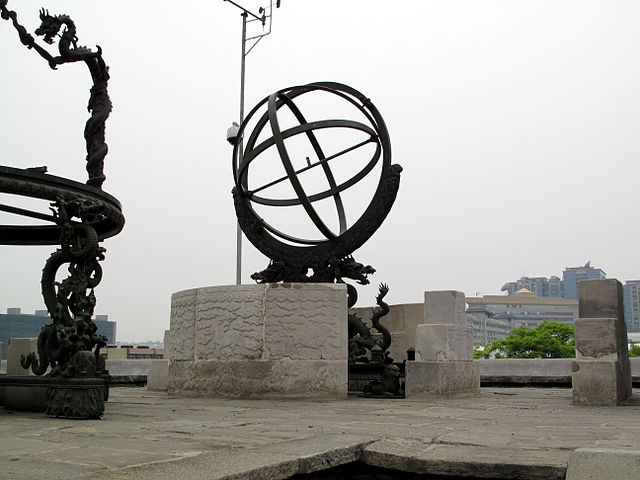
Ecliptic Armilla
Qing Dynasty, 1673
Ancient Observatory, Beijing
The armillary rings1 are joined to each other and to the frame in a way that allows the armilla to be turned in any direction. Its sighting bar is in the center, and its readout (observation) scale is marked on the thick supporting arc at the bottom. This instrument measures the ecliptic elongation2 and latitude of a celestial body. It also measures the 24 solar terms, which were a division of the year into 24 equal parts based on the summer and winter solistices.
1See The Armillary Sphere (Cambridge U.) for a brief introduction to armillaries in general.
2Also called the "ecliptic longitude difference." This is the angle, measured in the plane of the ecliptic (earth's orbit), between the sun and a celestial body.


